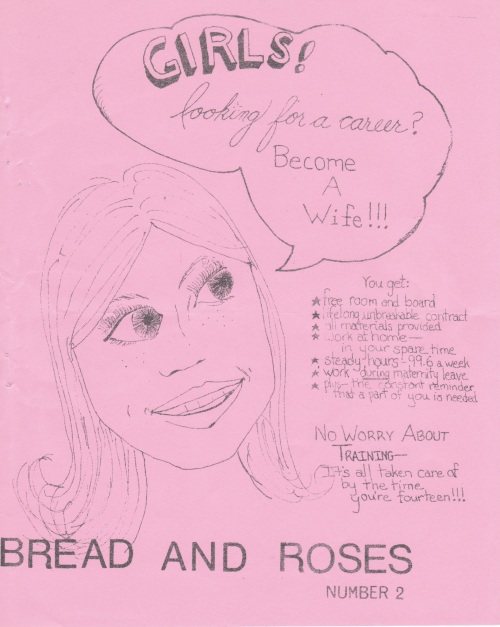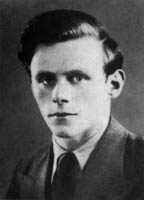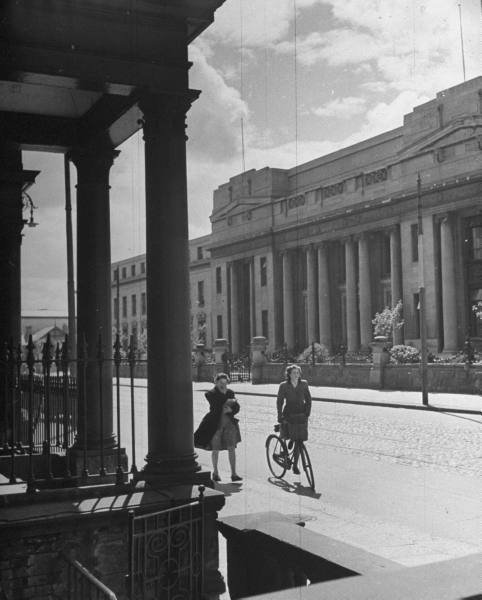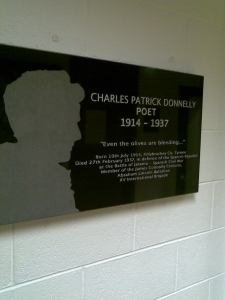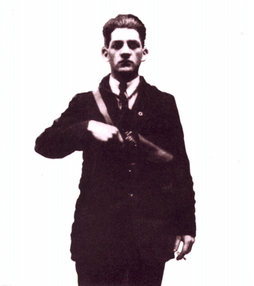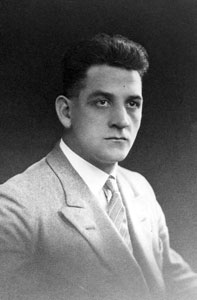Recent Comments
Tag Archives: UCD
UCD Rag Week – KKK
An interesting find on the British Pathe site! A 60second clip of UCD students outside Earlsfort Terrace performing a “skit” on the Ku Klux Klan during Rag Week in the 1930s/40s (?).
Click the image below to see the full movie.
Posted in Miscellaneous History
Tagged earlsfort terrace, kkk, ku klux klan, Rag Week, UCD
Bread and Roses (Student Feminist Magazine, c. 1974)
Bread and Roses was a Women’s Lib. fanzine published by women in Belfield in the mid 1970s. It was a crudely designed, black and white, 18 page stapled zine.
The slogan “Bread and Roses” originated in a poem of that name by James Oppenheim, published in The American Magazine in December 1911, which attributed it to “the women in the West.” It is commonly associated with a textile strike in Lawrence, Massachusetts during January-March 1912, now often known as the “Bread and Roses strike”.
I’ve been passed on issues 2 and 3. I’ve uploaded issue 2 (see below) and will get around to issue 3 as soon as possible. I’m not sure how many issues were published altogether. If anyone has any other copies, please get in touch.
*CLICK ON THE FRONT COVER BELOW TO READ THE FULL MAGAZINE*
Bread and Roses, Number 2:
Men – Where Is Your Courage? – Eileen Lynch
Feminism And Socialism – Betty Purcell
Women And The Law – Paula Scully
When A Man Wants A Woman (Poem) – Dory Previn
Women Your Body Is Your Own – Carol Louthe
A Poem – Marian Stenning
Self-help Clinics – Rosina Auberting
A Report On The International Womens Congress – Marion Connolly
Hibernia newspaper, 1967.
Peter Henry, who writes the Old Trinity column in Trinity News, has kindly passed me on a scan of an article about UCD student politics from 1967.
The article deals with the Fianna Fail, Fine Gael (including a feature on Vincent Browne) and Labour Party UCD branches.
You can read some of Henry’s articles on Trinity College here.
‘Instead’ (Radical Student Newspaper, 1971)
‘Instead’, was a “left wing Oz look alike” magazine that was published in Belfied in the early 1970s.
Aidan Magill, who read science at Belfield from 1968-72 and was involved with ‘Instead’, has kindly sent on a full issue of the paper and jotted down some of his memories of the magazine’s production.
I seem to remember we produced an issue about every two weeks and basically spent the entire Sunday through to the early hours locked in the Arts Block to do it. The entire place closed on a Sunday so we had to get let in by the Porters and had to get let out a certain times for food. It was quite a party atmosphere though we had to ban the smoking of dope as we made too many mistakes and didn’t get any work done.
You can read the full issue here.
Censorship in UCD, 1962
Conor James McKinney from T.C.D. Miscellany has very kindly sent me on a very interesting article that was written in the magazine in 1962 by Anthony Clare about the censorship regime in UCD at that time.
You should be able to read it by clicking the picture below and zooming in.
Posted in Miscellaneous History
Tagged censorship, earlsfort terrace, tcd miscellany, UCD
Belfield’s 1980s Rave Scene
In this instalment of UCD Hidden History, we talk to François Pittion (former Ents Officer) about Belfield’s infamous late 1980s rave scene…
Pittion began studying French and Linguistics in UCD in 1985 as part of an Arts Degree. He became involved in the UCD Students Union (UCDSU) early on, being elected as a class representitive and joining the Ents Committee.
He admits that facilities in Belfield at the time “weren’t really bad” but there was always an underlying feeling that students had to “get the degree and emigrate”. As there were no jobs going, students had the choice of either leaving the country or “stay and party”. Pittion chose the latter.
Up until then, there was no (electronic) dance scene in Belfield (or Dublin for that matter). The highlight of the week on campus was the disco in the Student Bar on a Saturday night. The DJ was Dave Lowe a.k.a Bambi who played “all sorts” Pittion remembers. He admits that cheap pints of beer during an extended Happy Hour were the main attraction for most students.
After a couple of years in the Ents committee, Pittion ran for Ents officer in 1987. The elections were hotly contested and he came up against the Kevin Barry Cumann i.e. the “Fianna Fail machine”. Fortunately, due to his contacts in Agricultural Science and Science, Pittion won by 260 votes.
Soon after his victory, Pittion and a close friend Mick Heaney began organising nights in the bar on Fridays “as an alternative to the Saturday disco”. The Friday nights, soon to be known as the ‘Unlimited Freak Out’ (UFO), would go down in Belfield campus infamy.
They began by playing a mixture of indie, 70’s punk and techno – “about 50% rave 50% guitar”. “I suppose”, Pittion ponders, “it would have been called madchester/balearic beats stuff”. (Quick music history lesson. Madchester – Alternative/indie/psychedelic 90s rock music. The Stones Roses, Happy Mondays, The Charlatans etc.. Balearic Beat – Genre of ‘house’ electronic dance music that originally emerged in the mid-1980s. The sound was initially typified by a distinctive, relatively heavy, slow (90–110 bpm), R&B-influenced beat.)
The UFO nights really took off. Pittion remembers that “the place would be packed by 8, and crazy by 11”. Due to this success, Pittion and Heaney had the idea of continuing the club after the UCD bar shut by running buses from UCD into The Rock Garden (until recently known as Eamon Doran’s) where the fun continued well into the early hours.
When questioned about drugs and the rave scene in UCD, Pittion is honest. He admits that the UCD authorities had no idea that every Friday night “half the bar was mashed on speed, acid and mushrooms”. The barmen knew what was going on, he says, but they turned a blind eye.
Though always associated with the rave scene, Ecstasy was not a popular drug during the late 1980s in UCD. It was too expensive. At the time, a single tablet of ecstasy could set you back £20-25. The widespread use of the drug in the rave scene didn’t come into play until the prices dropped in the early 1990s.
Pittion’s personal high point (“no pun intended!”) during his time in UCD was convincing Mark Collins (Ents Officer 1990/91) to put on The Shamen, the Scottish electronic band, at the 1991 Rag Ball. Well after graduating, Pittion was still asked to come back to Belfield to DJ the big Rag and Fresher Balls; he did this up to 1993.
Francois ran the UFO/Alien nights until 1997. From there he moved onto a Friday night residency in The Kitchen (which was based in The Clarence Hotel) a position which he held until 2001. For the last few years, he has taken a back seat in Ireland’s dance scene but still plays about four gigs a year, most recently in Tripod at the end of November 2009.
(Huge thanks to François for the interview and pictures)
Posted in Social History
Tagged belfield, Dance music, DJ Francois, Ents officer, Francois Pittion, Rave, Rock Garden, The Shamen, UCD, UFO
UCD & The Spanish Civil War
In this instalment of UCD Hidden History, we look at two UCD students who fought on the anti–Fascist Republican side of the Spanish Civil War…
Charles Donnelly, who grew up in Tyrone, entered UCD in October 1931 at the age of 17, to study Logic, English, History and Irish as part of an Arts degree. Within a month, he had his first poem ‘Da Mihi’ (Give Me) published in Cothrom na Féinne, a UCD student magazine which shared its name with one of the college’s mottoes. He soon began writing regularly for Cothrom na Féinne, contributing articles on “politics, literary criticism and modern philosophy” .[1]
A year before Donnelly entered university, according to Joseph O’Connor; UCD’s Student Representative Council (SRC) was founded. (To the best of my knowledge, it was founded in 1910).
The Student Representative Council (SRC) of the time, reflecting the general mood of the country, was controlled by members of two ultra-Catholic and conservative student organisations – the Student Christian Movement and the Pro Fide group.
Donnelly challenged them by helping to form an anti-Fascist left wing student group called The Student Vanguard. Its inaugural meeting was attacked by gang of Blueshirts. Donagh MacDonagh, son of Easter 1916 leader Thomas MacDonagh and classmate of Donnelly’s, who chaired the meeting, recalls that the “the trouble started fairly soon” with “private fights” kicking off all across the hall. MacDonagh “banged on the table but nobody took much notice”; in fact, “he admits that the noise increased considerably.”[2] It is not known to what extent the Student Vanguard was active on campus and what influence it gained amongst the college’s student body.
In 1934, while in his last year of college, Donnelly joined the Republican Congress and started a romantic relationship with another member, Cora Hughes. Hughes came from a well-respected republican family – her godfather was Eamon de Valera. She also had studied in UCD and became commander of the Cumann na mBan division on campus.[3] Hughes was jailed in September 1934 for her work in supporting rent strikes in Dublin.[4] Described as a “tireless housing activist”[5] she died tragically in 1940 after contacting TB in the slums.[6]
Donnelly failed his first year exams three times and eventually dropped out of college in the summer of 1934. He joined the International Brigades in 1936 in London and reached Spain in January 1937 to fight for the republicans against Franco’s Fascist counter-revolution. With the Abraham Lincoln Brigade, he saw action at the Battle of Jarama. On the 27th February, a little more over a month since his arrival in Spain, Donnelly was cut down by enemy machine gun fire and killed. He was 23.
On the eve of the 71st anniversary of his death, February 26 2008, Donnelly was commemorated with the unveiling of a plaque in Belfield, attended by 150 people. The commemoration, organised jointly by a group of UCD students and the Donnelly family, included a lecture by Gerald Dawe on Charlie Donnelly’s life and poetry. The plaque can be seen today in the UCD School of English, Drama & Film beside J206 in the Newman Building (Arts Block).
==
Frank Ryan entered UCD in September 1921 on a Limerick County Council scholarship[7] to study Celtic Studies, “an amalgam of Irish Literature and language, history and culture”[8] He joined the IRA officers’ training corps in UCD in the summer of 1922.[9]
Ryan was back home in Elton, Limerick on his summer holidays when the Four Courts were attacked, sparking the Civil War. He was attached to the East Limerick Brigade of the IRA and was injured by Free State soldiers during a firefight.[10] He was interned at Hare Park in the Curragh where he edited an Irish journal called An Giorrfhiodh. The first issue came out in June 1923. Ryan had a column in the journal called Piobaire an Bhrianaigh which was later republished in An Reult, the journal of UCD’s An Cumann Gaedhealach, which Ryan himself edited in 1924-5.
Released from prison in November 1923, Ryan returned to UCD. In 1924, he won An Cumann Gaedhealach’s gold medal for oratory, presented to him by An Craoibhin Aoibhinn, Dr. Douglas Hyde (who was later to become Ireland’s first President). From 1924-5, Ryan was also reachtaire or director of Cumann Liteartha na Gaedhilge.
He was also involved in the founding of the University’s first Republican Club. Their main activities were described as “fund-raising and nominating republican candidates for the parliamentary seats allocated to the universities”.[11] The club pressed UCD authorities to erect a memorial to Kevin Barry, another UCD alumnus. The university gave in after a decade of campaigning. It has been said that the stained glass window dedicated to Barry, which was erected in 1934, owes much to Ryan’s agitation.
Ryan recruited 80 men into the Connolly Column of the 15th International Brigade to fight for Republican Spain. He fought bravely at the Battle of Jarama and rose to become brigadier of the Lincoln-Washington Brigade. He was captured by Italian troops in 1938 and sentenced to 30 years of hard labour. After being released into the hands of German authorities in 1940, he spent the last four years of his life in Germany. He died of pneumonia in Dresden in 1944.
Finally, if you know of any other Irish volunteers who fought in The Spanish Civil War (on either side) and had connections with UCD, please get in touch.
(Note – This article relates only to the time Donnelly and Ryan were in UCD. For more information on Donnelly, I recommend Even The Olives Are Bleeding by Joseph O’Connor.
Further information on Ryan can be found in Adrian Hoar’s In green and red: the Lives of Frank Ryan and in Séan Cronin’s Frank Ryan: the search for the Republic.
For more information on the Irish who fought in the Spanish Civil War, try The Irish and the Spanish Civil War, 1936-39: crusades in conflict by R. A. Stradling and Irish Politics and the Spanish Civil War by Fearghal McGarry. Ciaran Crossey has an excellent, updated online resource for all things concerned with Ireland and The Spanish Civil War – http://irelandscw.com/ )
—-
[1] Joseph O’Connor, Even the Olives are bleeding, the life and times of Charles Donnelly (Dublin, 1992), x
[2] Donagh MacDonagh, Charles Donnelly, Irish Times, March 15 1941.
[3] Brian Hanley, The IRA, 1926-1936 (Four Courts Press, 2002), 103.
[4] Margaret Ward, Unmanageable revolutionaries: women and Irish nationalism (Pluto Press, 1983), 232.
[5] Donal Ó Drisceoil, Peadar O’Donnell (Cork University Press, 2001), 86.
[6] TDorothy Bell, Missing pieces: women in Irish History, Volume 1 (Irish Feminist Information Publications, 1983), 30.
[7] Seán Cronin, Frank Ryan: the search for The Republic (1980), 19.
[8] Adrian Hoar, In green and red: the lives of Frank Ryan, (2004), 19.
[9] Croinn, Frank Ryan, 20.
[10] Croinn, Frank Ryan, 24.
[11] Croinn, Frank Ryan, 30.
Posted in Radical History
Tagged charles donnelly, earlsfort terrace, frank ryan, spanish civil war, UCD
UCD Rag Week 1979 Poster
Thanks to The Vipers’ myspace for the image. http://www.myspace.com/the_vipers


